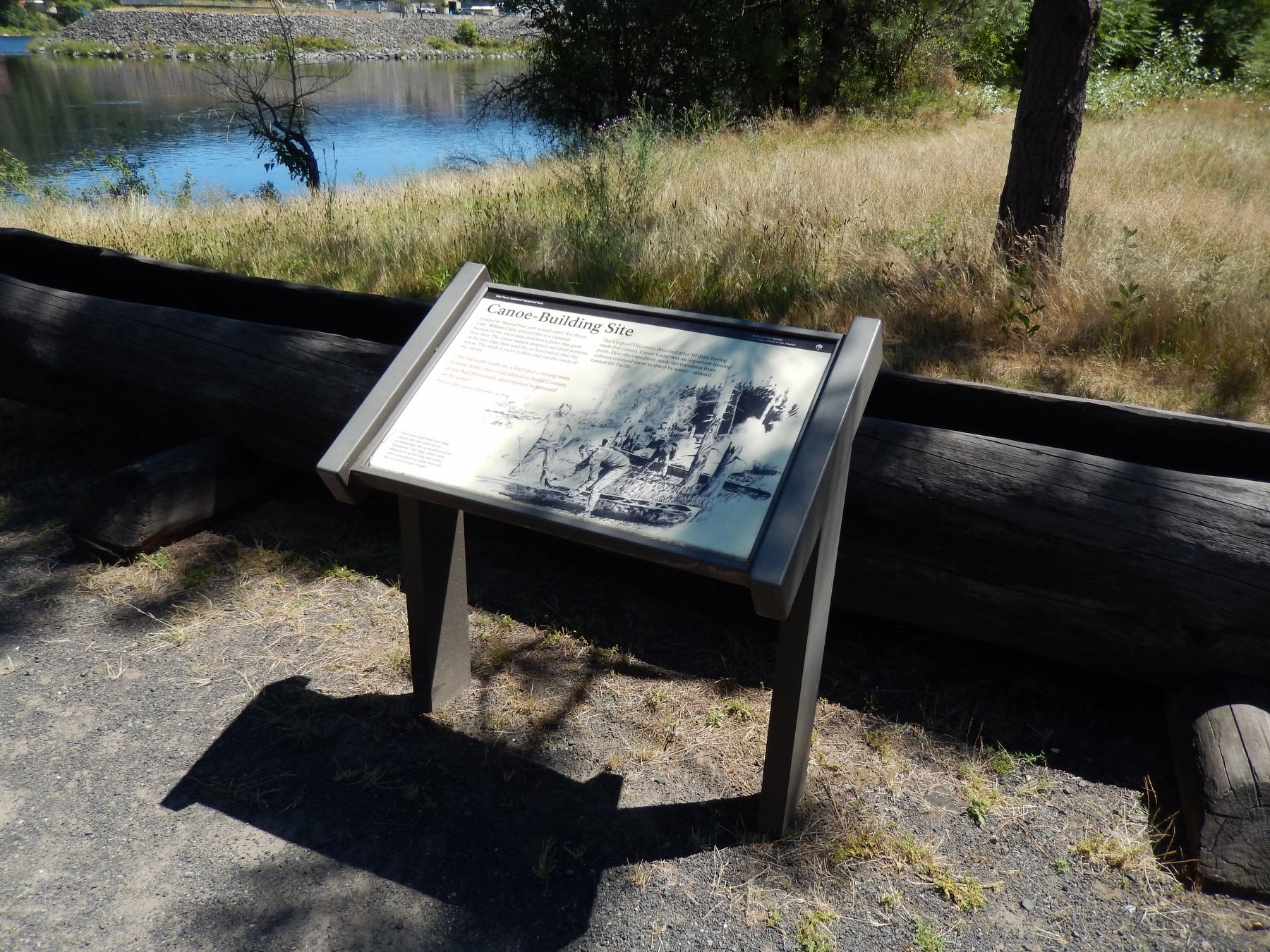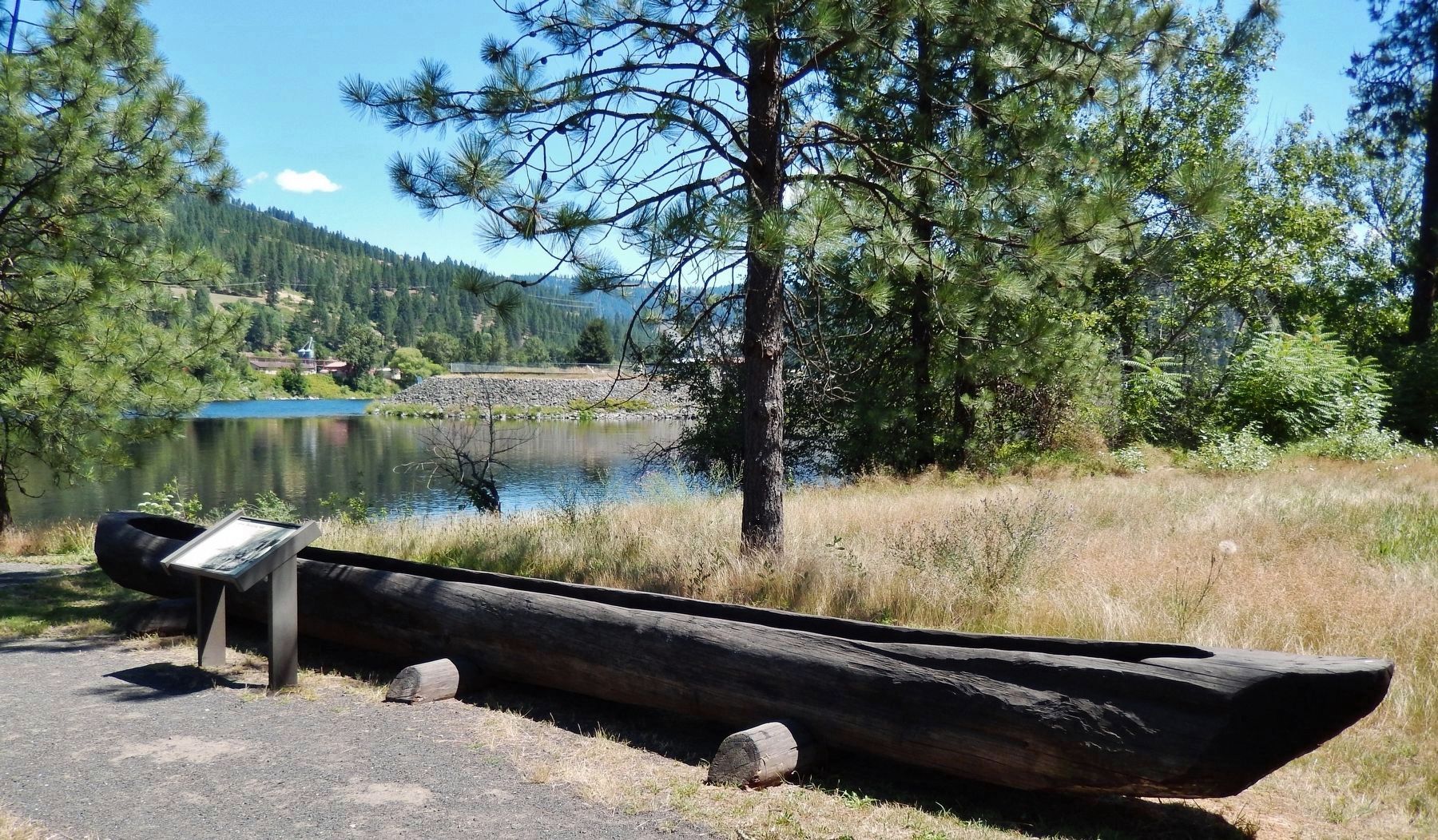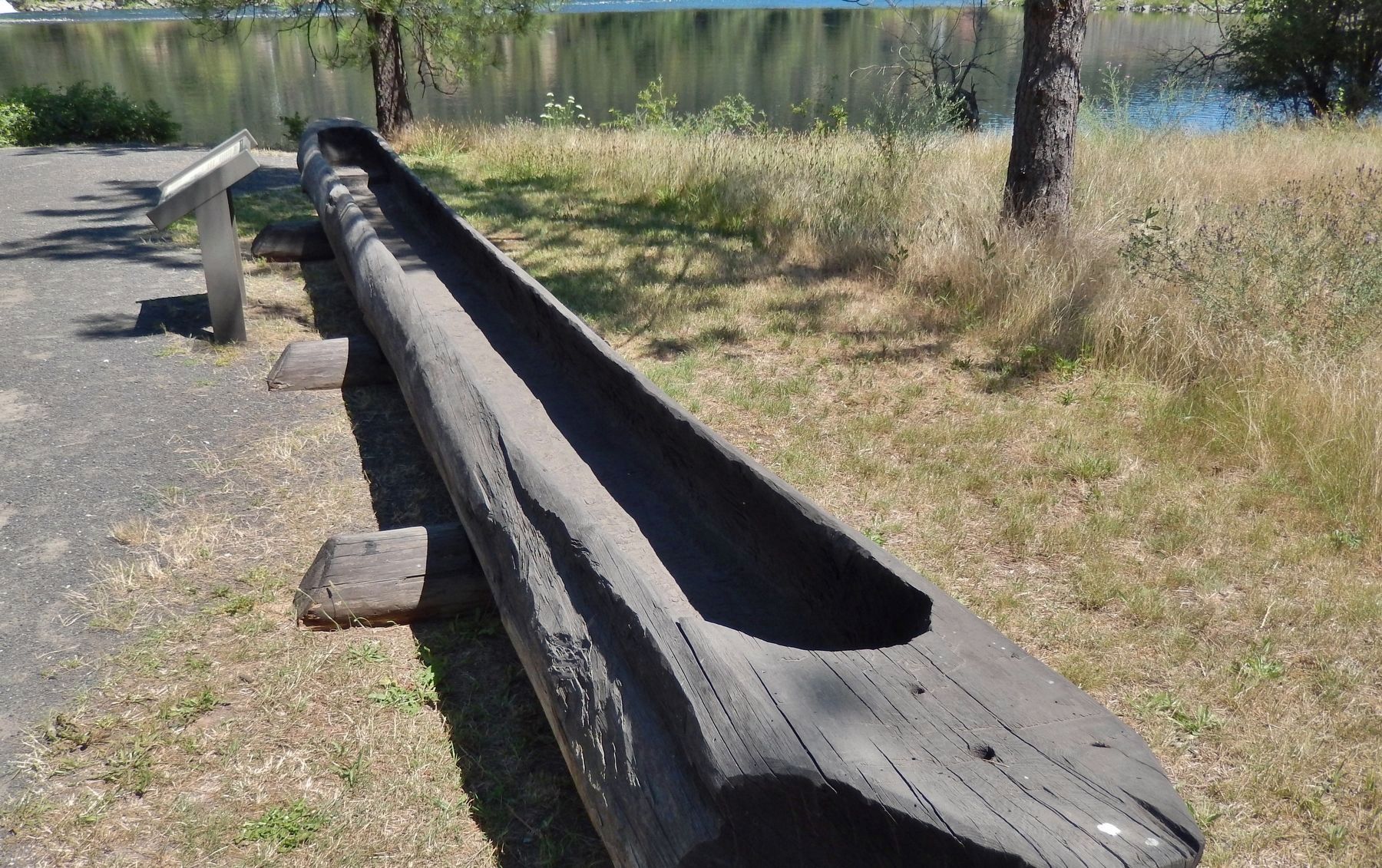Orofino in Clearwater County, Idaho — The American West (Mountains)
Canoe Building Site
Guided by Twisted Hair and several other Nez Perce, Capt. William Clark selected this as a camp site because of the many large ponderosa pines that grew here then. The canoe makers chopped out small portions of the pine logs, then used fire or hot coals to char the wood. This made it easier to chip out the inside of the canoes.
I set out early with the Chief and 2 young men to hunt Some trees Calculated to build Canoes, as we had previously determined to proceed on by water.
William Clark Journal, September 25, 1805
Lewis and Clark built four large canoes and one small one to accommodate the 34 members of the expedition. The large canoes were about 50 to 55 feet long and could carry a minimum of seven men and 800 to 1,000 pounds of gear.
The Corps of Discovery departed after 10 days, having made five canoes. Canoe Camp was an important turning point. Here the expedition made the transition from arduous overland travel to travel by water -- onward toward the Pacific.
Erected by National Park Service, U.S. Department of the Interior.
Topics and series. This historical marker is listed in these topic lists: Exploration • Native Americans • Waterways & Vessels. In addition, it is included in the Lewis & Clark Expedition series list. A significant historical date for this entry is September 25, 1805.
Location. 46° 30.056′ N, 116° 19.777′ W. Marker is in Orofino, Idaho, in Clearwater County. Marker can be reached from the intersection of U.S. 12 and 140th Street, on the right when traveling west. Marker is in Lewis & Clark Canoe Camp State Park, on the north side of the highway, between the highway and the Clearwater River. Touch for map. Marker is in this post office area: Orofino ID 83544, United States of America. Touch for directions.
Other nearby markers. At least 8 other markers are within walking distance of this marker. Ahsakha Village Site (within shouting distance of this marker); 1804-1806 Corps of Discovery (within shouting distance of this marker); Pit House Village (about 300 feet away, measured in a direct line); Orofino: A Fine Place (about 400 feet away); Welcome to Canoe Camp (about 400 feet away); Canoe Camp (about 500 feet away); Navigating the Clearwater (approx. 0.9 miles away); Clearwater River Log Drives (approx. 0.9 miles away). Touch for a list and map of all markers in Orofino.
Also see . . .
1. The Dugout Canoe.
Generally the dugouts were about thirty feet long and up to three feet wide, with a capacity of between two and three tons, including four to six men, who probably knelt in order to keep the center of gravity low and prevent tipping. Empty, each canoe may have weighed as much as a ton. (Submitted on November 10, 2017, by Cosmos Mariner of Cape Canaveral, Florida.)
2. Dugout Canoes: Historic facts about an ancient means of transportation.
Dugout canoes were once an important vehicle on the nation's waterways. They were made from the trees that were available on the riverbank. The ends of the log were shaped into a point and the bottom of the log was somewhat flattened to make the water glide around it easily and to make the log stable in the water. The top and heart of the log were carved out to make a place to sit and carry cargo. (Submitted on November 10, 2017, by Cosmos Mariner of Cape Canaveral, Florida.)
Credits. This page was last revised on August 25, 2020. It was originally submitted on November 10, 2017, by Cosmos Mariner of Cape Canaveral, Florida. This page has been viewed 296 times since then and 24 times this year. Photos: 1, 2, 3, 4. submitted on November 10, 2017, by Cosmos Mariner of Cape Canaveral, Florida. • Bill Pfingsten was the editor who published this page.



